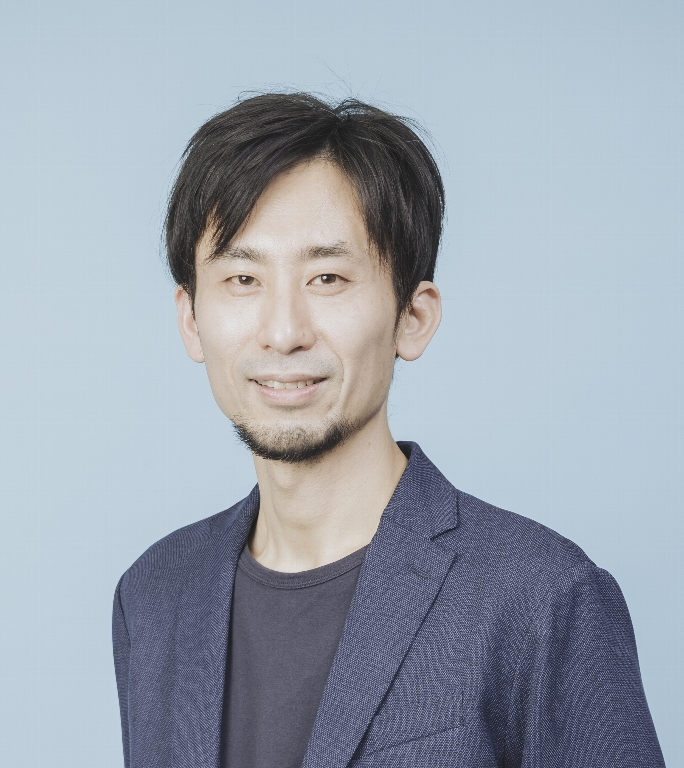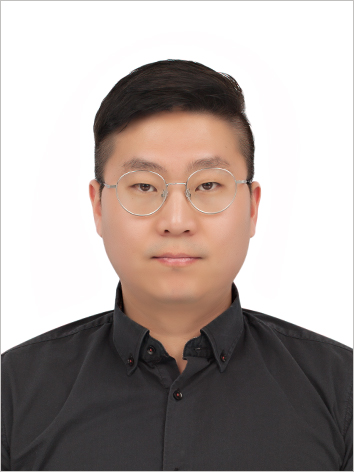Time
11.00 – 12.30
Room
La Consortia 1B
Chaired by
Teemu Santonen
Type of Session
Research Session
Description
Following the evaluation procedure the OLLD evaluation committee has accepted the research papers. All papers reflect on the theme of the conference “LIVING LABS FOR REGENERATIVE FUTURES: Connecting Local and Global Innovation Ecosystems ” and have been classified according to its sub-tracks. These are: TRACK 1: Living Labs for Grand Societal Challenges; TRACK 2: Living Labs for Policies, Governance, collaboration and innovation ecosystems; TRACK 3: LLs for Inclusive Soci(et)al Engagement; TRACK 4: Living Labs for Business and Emerging Technology; TRACK 5: Living Labs Operation, Methods, Tools, and Impact.
Papers selected by the Evaluation Committee
- The reflexive mechanism of a Living Lab platform for self-sustaining co-creation activities
- Quantitative evaluation of Living Lab value: Integrating tangible and intangible indicators
- Mapping the user co-creation approaches in Living labs to the research, development, and innovation processes for human-centric innovation
- Bridging vision and action: Integrating urban Living Labs and future methodologies
- Campus as a Living Lab for Sustainability: Learning from Change Agents at Utrecht University
The reflexive mechanism of a Living Lab platform for self-sustaining co-creation activitie
Abstract: Due to increasingly complex issues, there is pressing need for industry, government, academia, and citizens to work together to solve social issues and revitalize communities. While various co-creation activities are being continuously generated, the underlying values and mechanisms of the living lab platform that enables such activities remain underappreciated. This hinders rational investment decisions and legitimate evaluation of the platform’s long-term impact. In response, this study investigates the mechanisms of a platform that has been sustainably generating activities. Specifically, as our case study we use the Project to Connect Towns to Future Generations (TsunaPro) in Kamiyama-Town, Japan. Our findings identify the core dynamism provided by three main mechanisms: (1) Continuing dialogues and vision sharing, (2) Enriching diverse connections, and (3) Acting on vision responsibility.
Key words: Co-creation Platform, Living Labs, Long-Term Evaluation, Social Innovation ecosystem, Local and Regional Development, System Transition
Atsunobu Kimura
Senior Researcher,Co-Designing Institute for Polyphonic Society & Representative Director of the Japanese Network of Living Labs (JNoLL)

Atsunobu Kimura
Senior Researcher,Co-Designing Institute for Polyphonic Society & Representative Director of the Japanese Network of Living Labs (JNoLL)Atsunobu Kimura is a senior researcher at Co-Designing Institute for Polyphonic Society (a research institute specializing in social impact at NTT, a major Japanese telecommunications company) and Representative Director of the Japanese Network of Living Labs (JNoLL) (Ph.D. in Engineering). He also serves as an associate professor at a university and as a member of several expert advisory committees for national and local governments. His research fields include information science, design studies, and system design theory. In recent years, he has been conducting research on methodologies to address fundamental social issues across sectors and implementing new Living Lab practices in collaboration with numerous intermediary support organizations in Japan, including the Omuta Living Lab, Ikoma Living Lab, and Kamiyama Tsunagu Public Corporation. Publications include: "Getting Started with Living Labs" (NTT Publishing, 2025) and "Information and Communication Technology in 2030 - Future Lives of Citizens" (NTT Publishing, 2015).
Quantitative evaluation of Living Lab value: Integrating tangible and intangible indicators
Abstract: This paper proposes a novel framework for quantitatively evaluating living labs, integrating tangible outcomes with intangible social capital—a critical yet under-measured driver of collaborative innovation. By adapting validated social capital metrics (network/relational, trust, norms, cognitive, and collective efficacy dimensions) into a mixed-methods assessment model, we offer a theoretically rigorous yet practically applicable approach to measuring value creation across diverse living lab contexts. The framework maintains sensitivity to operational characteristics while enabling meaningful comparison between different living labs. This integrated methodology provides actionable insights for practitioners and policymakers, supporting informed decision-making for living lab development and long-term sustainability. Our approach addresses a significant gap in evaluation practice by offering evidence-based tools that capture the full spectrum of value generated through multi-stakeholder collaboration in innovation environments. activity were improved the respondents suggested more car-free zones in the city.
Key words: Living lab evaluation, Social capital, Intangible value measurement, Collaborative innovation, Mixed-method approach
Jooho Park
Postdoctoral Researcher, Research Institute on Human and Societal Augmentation (RIHSA), National Institute of Advanced Industrial Science and Technology (AIST), Japan

Jooho Park
Postdoctoral Researcher, Research Institute on Human and Societal Augmentation (RIHSA), National Institute of Advanced Industrial Science and Technology (AIST), JapanDr. Park's research focuses on citizen empowerment within smart cities through the use of living labs. He employs quantitative analysis to empirically investigate how these participatory platforms enhance citizen capabilities and contribute to more inclusive and sustainable urban development.
Mapping the user co-creation approaches in Living labs to the research, development, and innovation processes for human-centric innovation
Abstract: One important role of Living Labs (LLs) is to support research, development and innovation (RDI) processes. Previous LL studies have strongly emphasised the importance of user co-creation in supporting RDI projects. In addition, scholars have suggested that user co-creation in LLs involves various approaches. However, previous studies have not systematically presented categories of user co-creation approaches in LLs and their relationships with the phases of the RDI process. Co-creation in LLs therefore remains an ambiguous concept; it is often treated as a ‘magic word’ that can solve all difficulties in the co-creative RDI process. This lack of a deep understanding of the co-creation concept in LLs makes it difficult to plan effective integration of user co-creation approaches into the entire RDI process for human-centric innovation. Therefore, through a case study, this study aims to clarify how user co-creation approaches in LLs can be integrated into the RDI process. To this end, we first identify the categories of user co-creation approaches promoted in LLs to support RDI projects. Then, we clarify the relationship between user co-creation approaches and the RDI process in the context of human-centric innovation.
Key words: User co-creation, RDI, human-centric innovation, case study
Fumiya Akasaka
Senior Researcher, Research Institute on Human and Societal Augmentation (RIHSA), National Institute of Advanced Industrial Science and Technology (AIST), Japan

Fumiya Akasaka
Senior Researcher, Research Institute on Human and Societal Augmentation (RIHSA), National Institute of Advanced Industrial Science and Technology (AIST), JapanFumiya Akasaka, Ph.D., is a Senior researcher at the National Institute of Advanced Industrial Science and Technology (AIST), Japan. His research interests include the methodological aspects of co-design and living labs, socio-digital transformation design in smart city context, and community-based co-design for social innovation. He has been active in publishing high quality academic works and won the Best Full Research Paper Award at Open Living Lab Days 2024. He is continuously engaged in research activities to interconnect “practice” and “theory”; he leads the service design-based living lab projects in Kashiwanoha smart city in Japan and builds methodologies through such practical projects. He is also the principal investigator of LLL (Living Lab Laboratory) project, a research project for the establishment of a living lab methodology for the Japanese socio-cultural context. He acts as a board member of the JNoLL, a network of living lab and practitioners in Japan.
Bridging vision and action: Integrating urban Living Labs and future methodologies
Abstract: Urban Living Labs (ULLs) and futures methodologies (e.g., scenario planning, backcasting) are increasingly used to address complex urban challenges. While ULLs enable participatory, place-based experimentation, futures methods offer strategic direction by imagining long-term societal transitions. This conceptual paper explores how integrating both approaches can create synergies that enhance their individual and collective impact. We argue that futures methods can situate ULL experiments within broader narratives, while ULLs ground abstract futures methods and outcomes in tangible, local contexts. We identify three levels where integration adds value: (1) individual, by fostering futures literacy and empowering participants; (2) organizational, by aligning ULLs with long-term strategies and strengthening cross-sectoral collaboration; and (3) ecosystemic, by embedding ULLs in city-wide transition pathways and improving policy coherence. The combined approach helps shift cities from fragmented innovation to deliberate transformation. However, challenges such as temporal misalignment, institutional silos, and evaluation gaps remain. This paper offers an initial conceptual mapping of these synergies and calls for empirical validation. We suggest that purposeful integration of foresight and ULLs can enhance both the relevance and scalability of urban innovation, bridging the gap between vision and implementation in sustainable city-making.
Key words: Urban Living Labs, futures methodologies, urban innovation, methodological synergy, conceptual paper
Ben Robaeyst
Researcher at the research group for Media, Innovation and Contemporary Technologies, Department of Communication Sciences, Ghent University

Ben Robaeyst
Researcher at the research group for Media, Innovation and Contemporary Technologies, Department of Communication Sciences, Ghent UniversityBen Robaeyst is a researcher at Ghent University’s MICT research group. His work focuses on co-creation, design thinking, and living lab methodologies, with a particular interest in inclusive innovation and societal impact.
Campus as a Living Lab for Sustainability: Learning from Change Agents at Utrecht University
Abstract: This research provides insights into how a university campus can operationalize living labs to facilitate sustainability transitions. By offering an in-depth investigation of Utrecht University (UU) and the Centre for Living Labs (CLU), the study aims to explore the operationalization of campus living labs (CLL) as a transformative tool in research, education, institutional practices, and stakeholder engagement for advancing systemic change toward sustainability. The study asks: How do actors at UU engage with the CLLs in practice to advance sustainability transitions? How do CLLs support universities in achieving their overarching sustainability goals? Drawing from interviews that are held during a visiting research period at UU, the study incorporates a qualitative analysis with three major actor groups that became change agents in UU’s sustainability journey and focus on the CLL operations to learn from their insights on how sustainability is framed, negotiated, and implemented through CLLs at the institution, eventually to find out how much the university’s education and research focus is aligned with the sustainability goals in CLL operations.
Key words: Campus as a living lab, sustainability transitions, co-creation, qualitative analysis, higher education institutions
Eylem Keskin
PhD C. in Architecture at IZTECH. Visiting researcher at Centre for Living Labs Utrecht University, TÜBITAK 2214-A Fellow

Eylem Keskin
PhD C. in Architecture at IZTECH. Visiting researcher at Centre for Living Labs Utrecht University, TÜBITAK 2214-A FellowEylem Keskin is an architect and PhD candidate in Architecture at the Izmir Institute of Technology (IZTECH), supported by the CoHE 100/2000 Doctoral Fellowship. Currently a visiting researcher at Utrecht University’s Centre for Living Labs through the TÜBİTAK 2214-A Fellowship, her research explores the “Campus as a Living Lab” approach to link universities with sustainability transitions. Her interests include sustainable campus development, urban innovation, living labs, positive energy districts, and participatory design.
